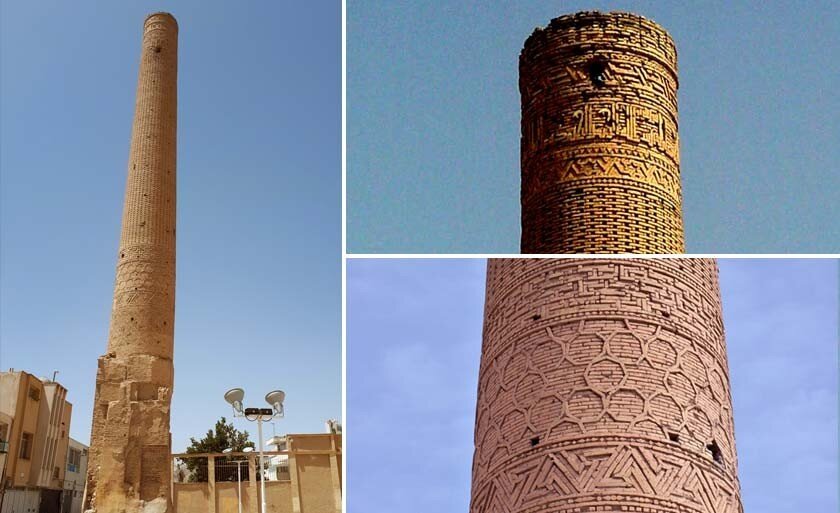Discover 12th-century minaret standing tall at Jewish quarter of Isfahan

TEHRAN – The Minaret of Chehel-Dokhtaran is one of the lesser-known attractions of Isfahan that is itself a top tourist destination for good reasons.
Construction of the monument was completed in c. 1107 in the Jewish neighborhood of Jubareh during the reign of Malek-Shah who was a sultan of the Seljuk Empire.
It is decorated with seven parts of brickwork and three inscriptions written in Kufic and Naskh calligraphy.
As a whole, the minaret is a 26-meter-long mud-brick structure, consisting of a five-meter octagonal plinth with a square-shaped foundation, and a 21-meter circular shaft featuring a window facing Mecca (used to be served for prayer call) and intricate brickwork decorations.
German archaeologist, Ernst Herzfeld, believed that the minaret was built near a theological school that no trace of it is left today.
It is not obvious why the minaret is called Chehel-Dokhtaran (forty virgins). However, in the Persian language, Chehel means “forty”, the word which is metaphorically used to describe “many”.
Narratives say that locals believed single girls would marry soon if they come to this minaret and give walnut to a passerby!
From the Islamic period, the architectural achievements of the Seljuk, Il-Khanid and Safavid dynasties are particularly noteworthy. During that time Iranian cities such as Neyshabur, Isfahan, and Shiraz came to be among the great cities of the Islamic world, and their many mosques, madrasahs, shrines, and palaces formed an architectural tradition that was distinctly Iranian within the larger Islamic milieu, according to Britannica.
Iranians’ passion for using the script as an artistic impression goes back to pre-Islamic times but it is the work of Islamic era calligraphers and illuminators that elevated its use into the high art we appreciate today. Encouraged by the Islamic preference for the art of calligraphy over representational arts, it developed from epoch to epoch and from style to style.
It is said that the Chehel-Dokhtaran minaret was originally about one meter longer than what is today, but its upper part was ruined over time.
AFM
Leave a Comment